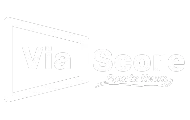In the ever-evolving realm of Information Technology (IT), where innovation and efficiency reign supreme, the critical pillars of governance and compliance stand as sentinels guarding against the turbulent winds of risk and uncertainty. Navigating this complex landscape requires a strategic approach that balances the pursuit of technological advancement with the imperative of adhering to regulatory frameworks. In this article, we delve into the intricacies of IT governance and compliance, exploring the challenges organizations face and the strategies to chart a course toward robust governance and unwavering compliance.
The Crucial Intersection of IT Governance and Compliance
Defining IT Governance:
IT governance is the framework of policies, processes, and decision-making structures that ensure the effective and efficient use of IT resources in achieving organizational goals. It is the compass that guides IT strategy, risk management, and performance optimization, aligning technology initiatives with business objectives.
Understanding Compliance:
Compliance, on the other hand, refers to the adherence to laws, regulations, and industry standards that pertain to an organization’s operations. In the IT domain, compliance encompasses a spectrum of regulations, from data protection laws to industry-specific standards, mandating organizations to operate within defined legal and ethical boundaries.
The Challenges of IT Governance and Compliance
- Evolving Regulatory Landscape:
The regulatory landscape is in a perpetual state of evolution, with new laws and standards emerging regularly. Keeping abreast of these changes and ensuring alignment with evolving requirements poses a significant challenge for organizations.
- Data Protection Concerns:
With the increasing volume and sensitivity of data handled by organizations, ensuring data protection and privacy has become a paramount concern. Compliance with data protection regulations, such as GDPR and HIPAA, requires meticulous attention to detail.
- Cybersecurity Risks:
The threat landscape in cyberspace is dynamic and sophisticated. IT governance must encompass robust cybersecurity measures to protect against evolving cyber threats, requiring constant vigilance and adaptation.
- Complexity of IT Infrastructures:
Modern IT infrastructures are intricate ecosystems comprising cloud services, on-premises systems, and interconnected applications. Governing and ensuring compliance across these diverse environments pose challenges due to their inherent complexity.

Strategies for Effective IT Governance and Compliance
- Holistic Frameworks:
Adopting comprehensive frameworks, such as COBIT (Control Objectives for Information and Related Technologies) or ITIL (Information Technology Infrastructure Library), provides organizations with a structured approach to IT governance. These frameworks offer best practices and guidelines for aligning IT with business goals and ensuring compliance.
- Risk Management Practices:
Robust risk management is intrinsic to effective IT governance. Organizations must conduct regular risk assessments to identify potential threats and vulnerabilities. Implementing risk mitigation strategies and controls helps in safeguarding against unforeseen challenges.
- Regular Audits and Assessments:
Conducting regular internal and external audits and assessments is a cornerstone of compliance. This includes evaluating adherence to regulatory requirements, internal policies, and industry standards. Audits provide a snapshot of the organization’s current state of compliance and governance.
- Data Governance Strategies:
Data governance is a crucial aspect of compliance, especially in the era of big data. Implementing data governance strategies ensures the responsible and ethical handling of data, encompassing data quality, security, and privacy.
- Training and Awareness Programs:
Human factors play a significant role in governance and compliance. Organizations should invest in training programs to raise awareness among employees about IT policies, cybersecurity practices, and compliance requirements. An informed workforce is a frontline defense against potential breaches.
- Integrated Technology Solutions:
Deploying integrated technology solutions, such as Governance, Risk, and Compliance (GRC) platforms, streamlines the management of IT governance and compliance processes. These platforms offer centralized visibility, automation of compliance tasks, and real-time monitoring capabilities.
- Collaboration with Legal and Regulatory Experts:
Given the intricacies of legal and regulatory landscapes, organizations benefit from collaborating with legal and regulatory experts. Establishing a robust legal and compliance team helps interpret and navigate complex regulations effectively.
Conclusion: Navigating the Future of IT Governance and Compliance
In the face of relentless technological evolution and an ever-shifting regulatory landscape, the role of IT governance and compliance is more critical than ever. Organizations that navigate this complex terrain with strategic acumen and a commitment to best practices find themselves not only resilient to risks but also well-positioned for sustainable growth.
As we venture into the future of IT governance and compliance, the key lies in the synergy of people, processes, and technology. It is a journey of continuous improvement, where organizations embrace the challenges of complexity, mitigate risks with foresight, and chart a course toward a future where governance is not just a requirement but a strategic enabler of digital success. In this dynamic landscape, the ability to navigate the intricate interplay of governance and compliance becomes not just a necessity—it becomes a strategic differentiator, propelling organizations toward a future where they not only survive but thrive in the ever-evolving world of IT.
Ashish Agrawal
CISO – PEWIN






